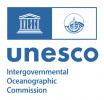Please use the form below to make contributions of multibeam and/ or single-beam survey data, individual soundings or existing grids to help update our gridded data sets and products. If you have any problems in completing the form, then please email this information to the Global Center ( gdacc@seabed2030.org ). Watch a short video on how to contribute data.
GEBCO releases a new global grid every year, generally in late June. Find out more about the grid generation process.
We value all data sets contributed to help us map the seafloor and will make every effort to include them in the next grid release. However, please note that any new contributions received after January may not be included in this year’s grid but will be considered for future releases.
Contributing data for public access
GEBCO encourages the sharing of source bathymetric data within the international community for the benefit of all.
The International Hydrographic Organization Data Center for Digital Bathymetry (IHO DCDB), manages a worldwide publicly-accessible digital data bank of oceanic soundings on behalf of the Member Countries of the IHO. Archiving data with the IHO DCDB ensures their long term preservation and public availability.
Contributing data for updating the GEBCO grid only
If source data cannot be made publicly available, data can still be contributed directly to GEBCO through the Seabed 2030 Project (as described in the form above).
The project prefers processed data in the form of multibeam grids, single beam tracks or pre-generated grids (i.e. a data set in gridded form based on a number of source data sets).
If submitting a pre-generated grid, please provide accompanying information describing source data types included in the grid and if areas are based on interpolation (e.g. as a Type Identifier Grid).
This information will better help us to 'map the gaps'.
Metadata
We ask for a set of metadata to accompany any bathymetric data sets submitted to us for updating the GEBCO grid. This information will help us understand how best to use the data and also allow us to acknowledge the organisations and individuals who are collecting the data and making it available. There are a minimum set of fields that are mandatory to be completed and others that are optional but will help us work with the data.
- Please use this spreadsheet to provide the metadata to us.
(50 KB)Document:
- Guidelines for providing metadata to accompany data sets contributed to update the GEBCO grid.
(88 KB)Document:
How to contribute data
Jennifer Jencks, Director of the IHO Data Center for Digital Bathymetry (IHO DCDB), explains how to contribute data for use by the international community and/or for updating the GEBCO global grid.
Useful contacts
- Global Center gdacc@seabed2030.org
- IHO DCDB bathydata@iho.int
- Seabed 2030 Regional Centers
Join the Crowdsourced Bathymetry (CSB) data initiative
In order to map the whole of the global seafloor, we cannot rely on traditional survey vessels alone. An initiative has been setup to support and enable mariners and professionally manned vessels to collect CSB. This approach leverages underway x, y, z, t data already being collected on vessels with common commercial echo sounders and Global Navigation Satellite System receivers.
Find out how to get involved.
Access the CSB information leaflets from the IHO's web site.
Our data contributors
GEBCO thanks all the data collectors and regional grid developers who make their data sets available. Find out about the data sets included in the GEBCO global grid.



